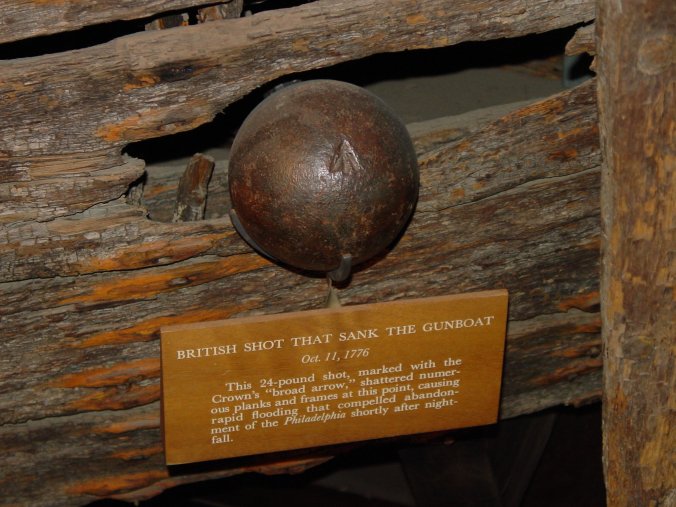

Gunboat Philadelphia
With the failure to capture Canada in the daring 1775-76 campaign, American forces withdrew back to Lake Champlain followed by pursuing British forces under Guy Carleton. To continue the advance further south, potentially cutting the rebelling colonies into two, the British had to gain control of the lake. Knowing this, Benedict Arnold started construction of a fleet of gunboats to contest control of the lake. The British began constructing their own fleet at the northern end. On October 11, 1776, the two fleets fought for control of the lake at Valcour Island. Although the Americans lost the battle, it was too late in the season for the British to continue the advance. That would have to wait until next year, by which time the Americans were better prepared. In the 1777 campaign, the British army under Burgoyne surrendered at Saratoga, in part due to the defeat at Valcour Island.
Eight gunboats like the Philadelphia were constructed, 53 feet long and 15 feet wide and armed with a bow mounted 12 pounder, a 9 pounder on either side, and several swivel guns. Forty four men crewed each vessel. Sunk due to battle damage, the gunboat was well preserved in the lake's cold water until it was salvaged in 1935. It is now on display in the Smithsonian.
 |
 |
This model in the Smithsonian gives a good idea of what the gunboat would have looked like when it was new. Aft, an awning could be unfurled to shelter the crew and ballast below deck compensated for the weight of the heavy gun at the bow.

Just to the right of the portside gun is a cookstove. A swivel gun is mounted on the starboard side. A Swedish or Dutch 12 pounder is mounted on sliding carriage at the bow, much like a European galley used in the Baltic or Mediterranean.

The 9 pounders on either side were relatively ancient, being Swedish guns from the late 1600s.
